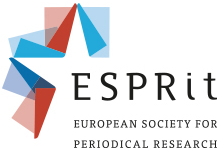ESPRit online seminar with Susann Liebich and Felix Larkin
ESPRit online seminars, Autumn 2021: ‘Crossover influences and local identities of the popular illustrated periodicals of the nineteenth and twentieth centuries’
Autumn series 2021, Session 2 - November 19, 3PM CET:
1) Susann Liebich (Heidelberg University), A New Zealand ‘quality magazine’: The Monocle, 1937-1939
In May 1937, a new magazine appeared in the New Zealand print market place: The Monocle, using the sub-title ‘New Zealand’s quality magazine’ was the country’s first dedicated men’s magazine; and a sign of maturity and confidence of its publishing scene. As is true for periodicals published in New Zealand in the first half of the twentieth century more generally, there has been little scholarly attention paid to The Monocle. This paper considers the publication of this magazine as an attempt to articulate a local version of transnational magazine culture on the edges, or outside of, the cosmopolitan and global centres of the English-speaking publishing world. Modelled clearly on overseas counterparts, the magazine offered a New Zealand specific version of middle-brow and middle-class modernity, first explicitly directed at men, then, soon after, addressing a mixed gender readership. The magazine was a relatively short-lived venture, folding after two years. Nevertheless, as a publishing experiment, The Monocle was a trailblazer in a print market still largely dominated by imported publications. This paper introduces The Monocle, reflects on possible reasons for its demise, and considers its role and legacy within a transnationally shaped New Zealand magazine market.
2) Felix Larkin, Periodicals and Journalism in Twentieth-Century Ireland
My paper will survey the Irish periodical press over the course of the twentieth century with a particular focus on its contribution to the development of journalism in Ireland. The research that has been done to date on Irish periodicals has tended to concentrate on the journal as literary miscellany rather than as a vehicle for news and commentary.
From the early 1900s onwards journals advocating an Irish-Ireland, a republican Ireland, a workers’ republic, a Catholic Ireland, as well as journals promoting the Irish language, the co-operative movement and the rights of women began to appear. After independence, a new breed of journal critiquing the kind of society that was emerging in the new state began to flourish. Some journals were unambiguously organs of dissent; others were organs of important minority communities that would not otherwise have had a voice in Irish media – for example, women, the young, the gay community, religious interests and the Irish-Ireland movement.
In the latter forty years of the century, the most prominent journals were those that concentrated on current affairs, promoted investigative journalism and exposed the often opaque intercourse between the worlds of business and politics. These journals helped shape the thinking that led to a more open Irish society from the late-1960s onwards.
By reference to the periodical landscape, the paper will draw on themes of continuity and discontinuity in Irish society in the twentieth century, the notion of what a free press actually meant at different times, the relationship between periodicals and the public sphere, and the political economy of periodical publishing. It will also raise the pertinent question of the future for periodicals in the digital age.
